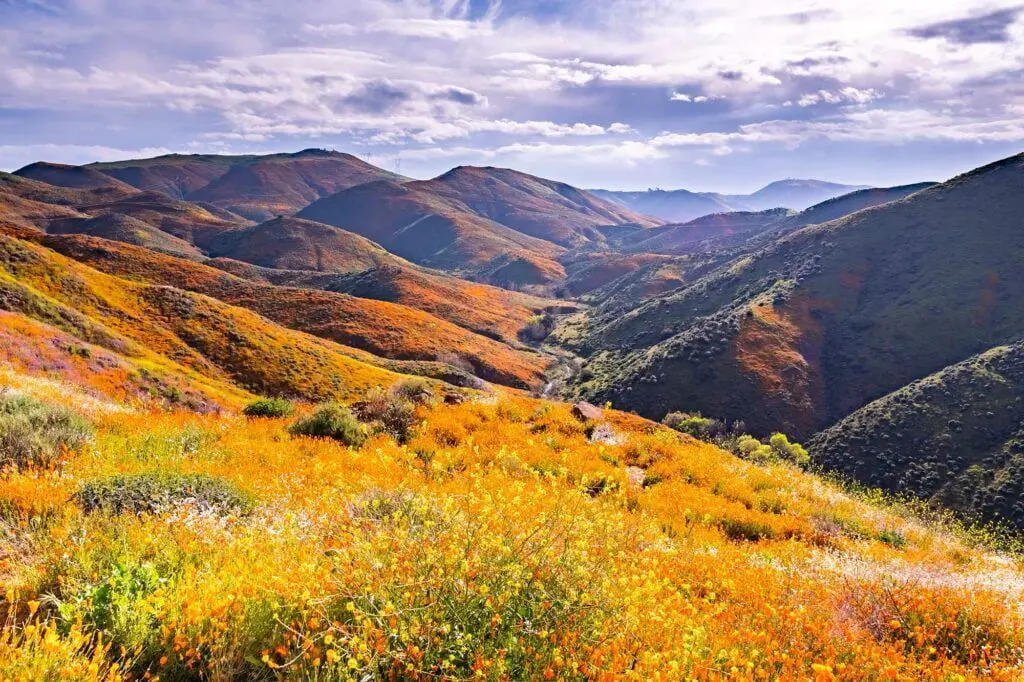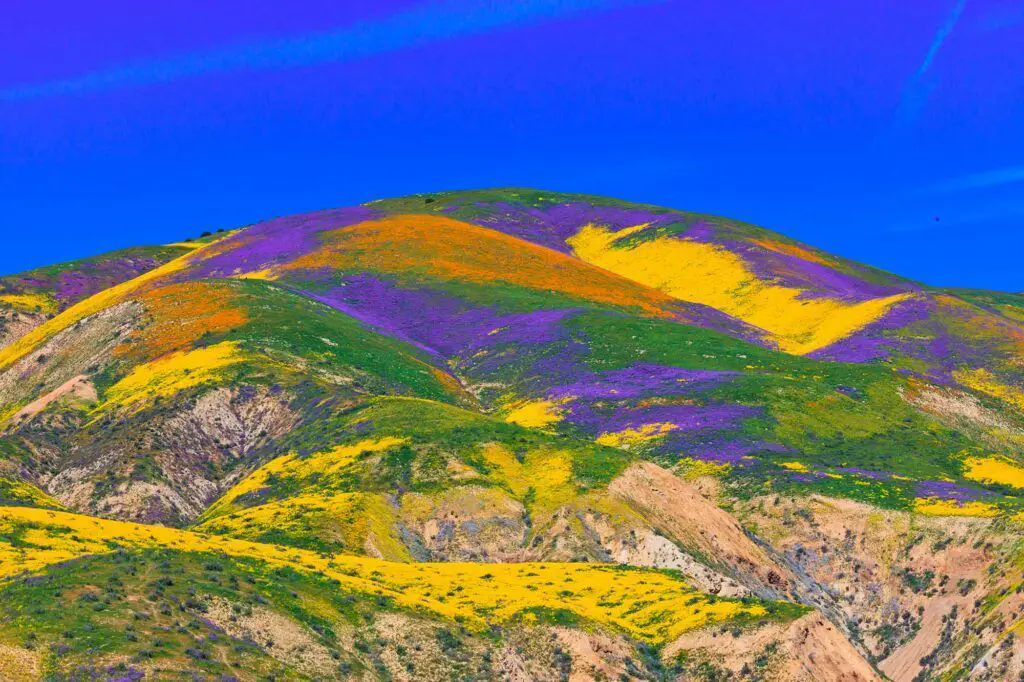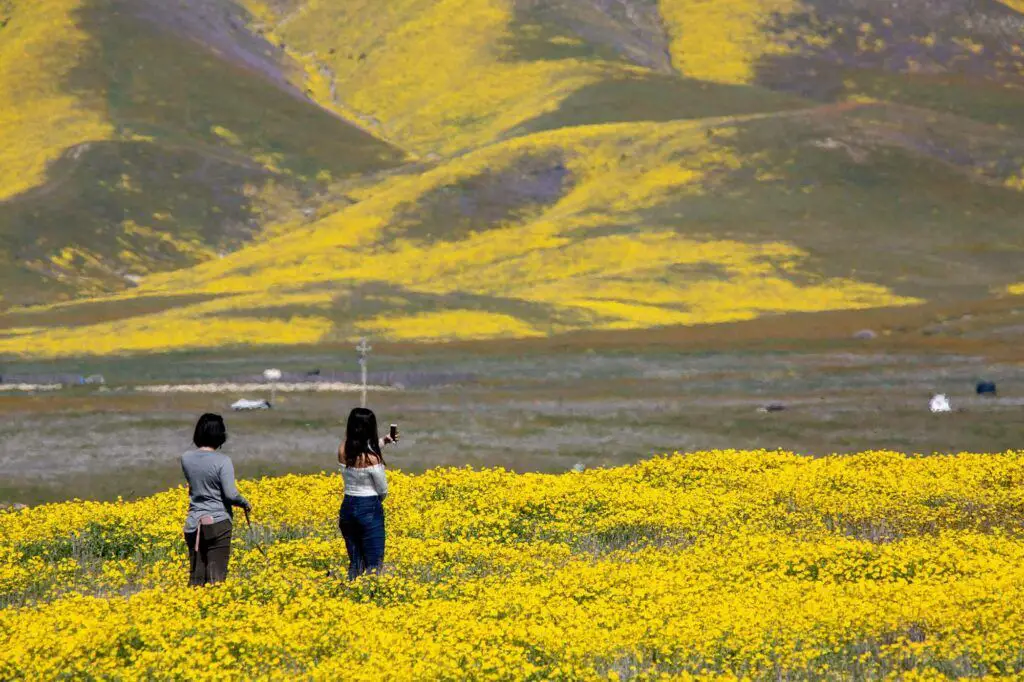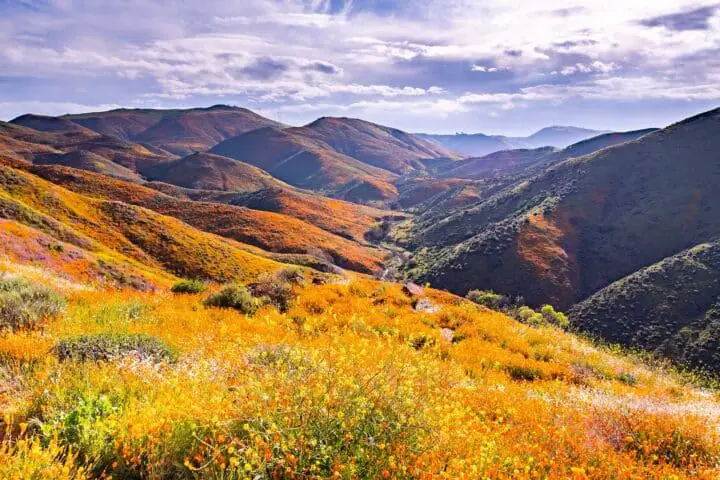In the arid deserts and valleys of the Western United States, a rare and magnificent natural event occasionally graces the landscape: the superbloom. This phenomenon, characterized by a sudden and explosive growth of colorful wildflowers, typically occurs in the spring following a period of above-average rainfall, such as this past winter of seemingly non-stop atmospheric river events, which may have also ended the California drought, at least in the short term.
Superbloom events are sporadic and difficult to predict, as it’s not just a wet winter that’s required to trigger these desert wildflowers to grow. So what is a superbloom? That’s what we’ll explore here, discussing the environmental factors that contribute to its occurrence, the key species of wildflowers that participate in this event, and the impact of this extraordinary display on the local ecosystem and human communities.

What is a Superbloom, and Why Does it Happen?
The superbloom is not an annual event and can be challenging to predict due to the specific combination of environmental factors necessary for its occurrence. The Western United States, particularly the arid regions of California, Nevada, and Arizona, is known for its Mediterranean climate, characterized by mild, wet winters and hot, dry summers. This climate is conducive to the growth of numerous species of wildflowers that have adapted to the unique environmental conditions of the region.
The superbloom is seeded — pardon the pun — during years of heavy rainfall. As these wildflowers bloom, seeds drop to the ground. However, unlike other flowers, these desert wildflowers have adapted to survive without water — sometimes for years. These long dormant seeds reawaken and grow when the next wet winter arrives, blooming by spring, typically in late March through May — around the same first flowers usually appear in wetter areas of the southern US.
But a few other factors need to align besides the wet winter, which saturates the soil and provides the necessary moisture for seed germination. Temperatures during the spring months must also be moderate and relatively stable, without any sudden fluctuations that could negatively impact the growth of the wildflowers. If temperatures quickly warm after the rainy season and there is a premature end to precipitation, the wildflowers might not have enough moisture to grow.
Finally, the area must have experienced minimal disturbance from grazing animals, invasive plant species, or human activity, allowing for the proliferation of the native wildflower species that create the breathtaking display.
Common Superbloom Wildflower Species
A diverse array of wildflower species contributes to the vibrant colors and patterns characteristic of a superbloom. Some of the most common species found during these events include the California poppy (Eschscholzia californica), lupine (Lupinus spp.), desert gold (Geraea canescens), desert dandelion (Malacothrix glabrata), and phacelia (Phacelia spp.).
These wildflowers and many others create a stunning tapestry of colors ranging from the vibrant oranges and yellows of the California poppies and desert golds to the rich purples and blues of the lupines and phacelias. The combination of these various species creates a visually stunning display and contributes to the ecosystem’s overall health and diversity.

Ecological Impact
The superbloom has a profound impact on the local ecosystem. The sudden proliferation of wildflowers provides an abundant food source for various pollinators, such as bees, butterflies, and hummingbirds, which in turn helps maintain the plant community’s health and diversity. The wildflowers serve as a source of nutrition for various herbivorous animals, such as rabbits and deer, which may attract predators like coyotes and mountain lions.
This influx of resources can lead to a temporary increase in biodiversity and overall ecological health. Moreover, the presence of wildflowers can help to stabilize the soil and prevent erosion, an essential function in the arid landscapes of the Western United States.
The superbloom has become a popular tourist attraction, drawing thousands of visitors to the region during its brief occurrence. While this influx of visitors can provide a significant boost to the local economy, it can also place a strain on natural resources and the environment. An increased number of visitors can lead to the trampling of wildflowers, soil compaction, and the disturbance of wildlife habitats.

Minimizing Human Impact
To mitigate the impact of tourism on the environment, local communities and conservation organizations have taken measures to preserve the unique beauty of the superbloom. This includes implementing educational campaigns to inform visitors about responsible practices, establishing visitor quotas, and designating certain areas as off-limits to protect sensitive habitats. By working together, tourists and local stakeholders can ensure that the superbloom continues to delight and inspire future generations.
The superbloom phenomenon in the Western United States is a remarkable display of nature’s resilience and beauty. These extraordinary events result from a unique convergence of environmental factors, bringing together various wildflower species to create a breathtaking tapestry of color. The ecological impact of the superbloom extends beyond its visual appeal, supporting an increase in biodiversity and promoting overall ecosystem health.



